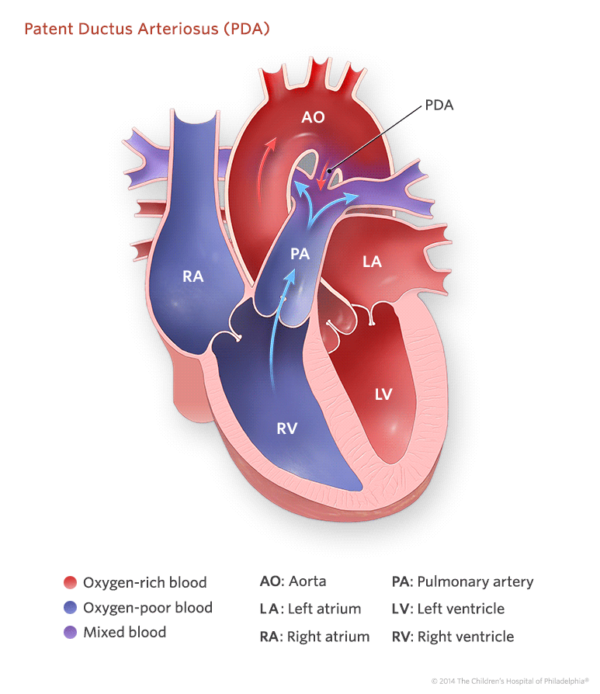Heart Issues
Some babies born at term might have heart issues which can be treated in the NICU
Patent Ductus Arteriosus
Parents of term babies may often hear the term ‘Patent Ductus Arteriosus’ (PDA) or that the baby has “a duct in their heart”. Do not be alarmed; this condition is common and is usually transient.
When a baby is growing in the womb, their lungs are filled with fluid and are not inflated. Instead, the placenta helps them to ‘breathe’. The exchange of oxygen and carbon dioxide gases occurs within the blood of the placenta. Most of this blood goes to the baby’s heart to supply their body with oxygen and nutrients. As the baby uses the placenta instead of their lungs to ‘breathe’ when in the womb, their lungs are not needed for gas exchange and are bypassed. This bypass is achieved by a duct just outside the baby’s heart called the ductus arteriosus.

The ductus arteriosus
The ductus arteriosus is a small blood vessel that is present just outside the baby’s heart when they are in the womb. This duct connects the two main blood vessels in the heart: the aorta and the pulmonary artery. At birth, the baby takes their first breath which causes a change in blood pressure. This change in blood pressure causes the fluid in the lungs to be drained and the lungs to expand with air. Blood flow is then directed towards the lungs for oxygenation and gas exchange.
After birth, the duct is then not needed and closes within the first few minutes of life. If the duct remains open it is called PDA which can last hours, or sometimes days. If the duct is large and is causing problems for the baby, treatment will be required to encourage the duct to close, but this is rare in term babies.
Treatment will be either medication or surgery. Your baby’s doctor will discuss the available treatment options with you, and will provide you with information to help you in making an informed choice to act in the best interest of your baby.
- Medication
The medications used to treat PDA are called indometacin and ibuprofen.These work best if given before your baby is two weeks old. They are usually given into the vein (intravenously).Your baby’s heart will be scanned after treatment to determine if the treatment is working.
- Surgery
If the medications are not working, the doctor may recommend a small surgery to close the duct. The doctor’s recommendation to perform surgery will depend on the problems experienced by your baby
Benign Heart Murmur
Many healthy babies have a heart murmur in the neonatal period and does not mean they have a congenital heart disease.
All babies have their blood oxygen saturation levels monitored before they leave the hospital. Blood oxygen saturation levels are assessed using a pulse oximetry. If your baby’s blood oxygen levels are below the normal range, they will be clinically assessed by a doctor. They may be kept in the neonatal unit and/or referred for a follow-up appointment.

